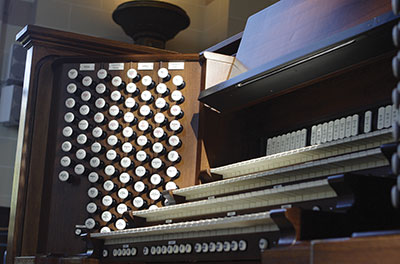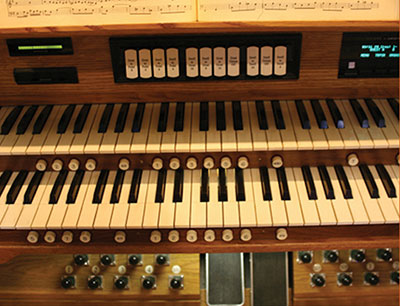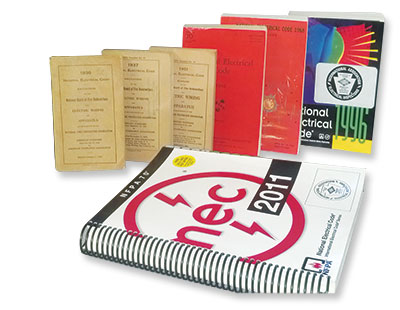The National Electric Code, in Article 650, contains the electrical requirements for pipe organs. Pipe organs have been in existence since early Greece in the third century B.C. They were viewed at one time as the greatest of human achievement. But why on earth is there an article in the NEC dealing with these music producing instruments?
A Little History
Pipe organs have been around a long time. In the early years, these devices used water pressure for the production of wind to produce their all too familiar sounds. Unlike a piano, the pipe organ continues to produce its desired sound as long as the pedal is depressed. Many of us have fond memories of hearing these at churches and cathedrals from around the world. Their unforgettable sounds have been played in musicals and movies such as The Phantom of the Opera. Who can forget those eerie (or to some, wondrous) sounds!
Many dignitaries have been laid to rest in the presence of the sounds of this instrument. Presidents and other world leaders have been resting in state or officiated over with the accompanying sounds from the pipe organ. Thousands of weddings have been officiated over and joyful lifetimes begun in buildings that employ these magnificent instruments. The pipe organ has played a large part in many religious ceremonies throughout the ages and continues to do so to this day.

Photo 1
The oldest playable organ was built in 1430. It is known as Organ Sion Switzerland Notre Dame de Valere. As one might expect, there are many locations in Europe that have famous pipe organs that have been around for hundreds of years. The largest pipe organs in the United States are found in Atlantic City, New Jersey, and Philadelphia, Pennsylvania. One of the most well-known locations is the Washington National Cathedral. There are many official events held yearly at this historic location. A recent earthquake on the East Coast had many concerned about whether there had been any extensive damage to the structure or contents of the building. There had been some damage to the building but the organ was unharmed. One construction worker remarked, “God watches over this building.”

Photo 2
Electricity and Electronics
The advent of electricity led inventors to replace mechanical and wind action with electro-pneumatic and electric action. By using low-voltage direct current (dc) electricity, keyboards could use electronic magnets with valves and electro-mechanical actions to play the pipe work. Electricity also allowed other musical sounds to be played with the organ pipes, mimicking the sounds of other instruments.
The pipe organ also has a long history in the National Electric Code. I have researched our library at the IAEI back to the 1930 edition; and, as expected, there exists an article covering the pipe organ. It might be in earlier versions, as well, but I did not have them for my use at this time. Although the article has seen a few changes over the years, the pipe organ is still installed or maintained using the valuable information found within the NEC requirements.
Article 650 is a relatively short article compared to others in the NEC. One would not think that an article that is not well-known would still hold any relevance in the electrical industry. Believe it or not, there were changes within this article between the 2008 and the 2011 code cycle! This article falls under the purview of code-making panel 12 of the National Fire Protection Association. It is a pertinent article that has applications to a specific item that many in this industry may never have an opportunity to work on or inspect. But the application it serves for the pipe organ is relevant and important to the safety of the equipment, the public, and its user. Here is a brief overview of Article 650, Pipe Organs.
650.4 Source of energy is a transformer-type rectifier, not to exceed 30 volts dc.
650.5 Grounding requires the rectifier to be bonded to the equipment grounding conductor according to 250, Parts V, VI, VII, and VIII.
650.6 Conductors have restrictions of size, insulation, cable, and covering.
650.7 Cables shall be securely fastened in place and are permitted to be attached directly to the organ structure without insulating support, but not in contact with other conductors.
650.8 Overcurrent protection must be provided for 26 AWG and 28 AWG conductors at not more than 6 amperes; other conductor sizes are to be protected according to their ampacity.
One of the 2011 changes occurred in 650.3 concerning other articles in the NEC that apply to this article. Two additions were made to this section to include (A) Electronic Organ Equipment and (B) Optical Fiber Cable. Electronic organ equipment shall also conform to Article 640, Audio Signal Processing, Amplification, and Reproduction Equipment. Optical fiber cable shall conform to Article 770, Optical Fiber Cables and Raceways.
Another change occurred within 650.7 as it applies to the installation of conductors. The change deals with abandoned cables that do not terminate at the equipment. The change states that the cables shall be identified with a tag.

Photo 3. The introduction of electricity led inventors to replace the mechanical and wind action in pipe organs with electric action. Then, of course, that installation was covered in the NEC — in 1930 [the earliest version in the IAEI library]. Shown here are representative copies of the Code from the 1930s, 1950s, 1960s, 1990s, and the current 2011 Code.
But keep in mind that there are other requirements found in the NEC that apply to pipe organs. An example is found in Article 250.112(B) which speaks to a requirement for an equipment grounding conductor. This requirement applies to the generator or motor frame of a pipe organ, unless effectively insulated from ground and the motor driving it.
Pipe organs have had an impact on society for approximately 2300 years or more. With proper maintenance and installation practices, they will continue to fascinate and invigorate another generation of people. The articles that some believe are insignificant within the NEC often play a bigger role than some might expect. Take time to know the sometimes overlooked articles in your code book. They might just bring about a new appreciation for items like the pipe organ.







Find Us on Socials